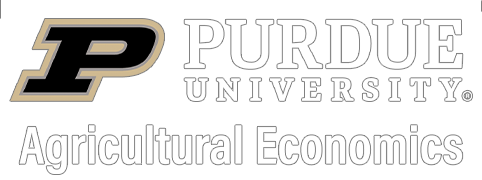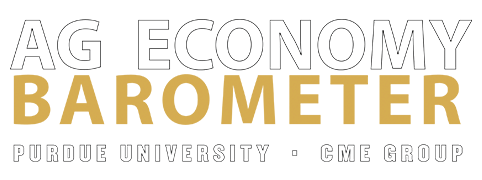June 8, 2018
Pork Industry May Face Large Losses
by Chris Hurt
Large pork supplies, rising costs, and potential trade retaliation from both Mexico and China continue to cast a shadow over the pork industry. Losses are expected for the rest of 2018 and 2019. Those losses will be small this summer, but then the bottom falls out. Losses of more than $25 per head are estimated for the last quarter of 2018 and the first quarter of 2019.
There is a lot of pork. Production so far this year is up nearly four percent with the number of head coming to market about three percent higher and weights up near one percent. Domestic demand and export demand have been good this year but not strong enough to offset the higher supplies. As a result live hog prices have been down three percent.
In the January to May period of 2017 the live hog price for 51% to 52% lean carcasses averaged $48.74. This year the price was about $1.75 lower, around $47.
Trade concerns continue, but exports have remained favorable in the data that is available so far this year which shows pork exports growing by almost six percent. This is on-track with current USDA estimates for pork exports to grow by five percent for the entire year.
Retail demand also appears to be positive with data released for this year. Retailers are selling pork at $3.75 per retail pound compared to $3.69 for the same period one year ago. The ability to sell a higher volume of pork at higher prices is an indication that consumer demand has strengthened.
Unfortunately, a smaller portion of those retail dollars are getting to pork producers as marketing margins have widened, especially at the retail level. Packer margins have dropped sharply as a result of the added packer capacity that came on-line in the past year.
The pork industry is caught up in trade disputes. The Trump administration has chosen to use threatened tariffs as a means to voice concerns to other countries about trade policies. For steel and aluminum imports the U.S. has moved beyond threats and implemented actual tariffs. The EU, Mexico and Canada recently lost their exemptions as allies of the U.S. China has always been a target of the steel and aluminum tariffs.
With the U.S. tariffs on imports of foreign metals in place, retaliation has come from the EU, Mexico, Canada, and China in the form of tariffs on U.S. exports to their countries. For pork, the gravest concerns are Mexico which purchased 32 percent of U.S. pork export volume in 2017. Canada and China each purchased nine percent of U.S. pork exports last year. Those three countries purchased one-half of all U.S. pork exports in 2017.
Each of these countries remain in discussions with U.S. trade authorities. This means there is still hope that differences can be resolved. The bottom line is that exports represent the market for 22 percent of U.S. pork production. The industry is already facing substantial losses in 2018 and 2019 and thus is in a vulnerable position if these trade differences should reduce pork exports.
Looking forward, pork supplies are expected to continue to be four percent higher for the rest of the year, and may moderate to a growth rate of about three percent next winter. Hog prices are expected to average near $50 in the second quarter this year, in the low $50s in the third quarter, and around $43 in the final quarter. That will provide an annual 2018 price of $48 compared to $50.50 last year.
Costs are expected to rise as well in 2018 with higher costs for labor, interest, fuel, machinery and feed. Soybean meal prices at Decatur averaged $315 a ton in 2017, but are expected to be around $375 a ton in 2018. Higher corn prices will also drive costs higher especially for the 2018/19 marketing year roughly spanning the last quarter of 2018 and the first three quarters of 2019.
Losses for average costs farrow-to-finish operations are estimated to be $8 per head in the second quarter of 2018 and $3 per head of loss in the third quarter. Then losses explode to an estimated $29 per head in the last quarter of 2018 and $24 per head of loss in the first quarter of 2019.
On an annual basis estimated profits were $4 per head above all costs in 2017, are estimated at a loss of $11 a head in 2018, and an even greater loss of $14 per head in 2019.
With large losses a possibility, pork producers will want to consider how these losses might impact their business and make adjustments in preparation.
TAGS:
TEAM LINKS:
RELATED RESOURCES
UPCOMING EVENTS
We are taking a short break, but please plan to join us at one of our future programs that is a little farther in the future.




